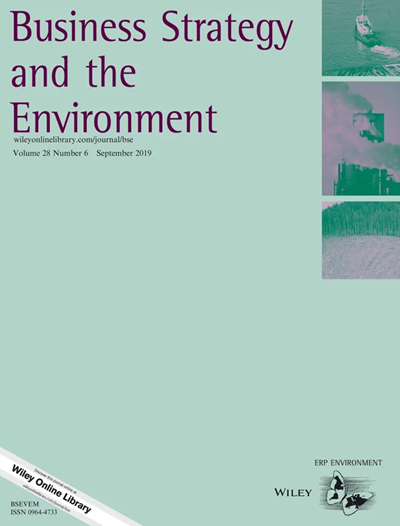揭示循环生态系统在葡萄酒行业:设计科学的应用
IF 13.3
1区 管理学
Q1 BUSINESS
引用次数: 0
摘要
葡萄酒行业产生了大量的副产品,特别是葡萄渣和酒渣,它们经常被丢弃或未充分利用,引起了严重的环境问题。然而,这些副产品富含有价值的化合物,可用于各种工业应用,如补充剂、化妆品、保健品和药品。本文提出了一个基于设计的模型,用于实现循环农业区(CAD),使酒厂副产品的可追溯价值。该模型以设计科学研究方法为基础,结合了数字工具、合作治理和循环业务机制。在意大利南部的一家酒庄进行了概念验证,证明了其协调当地利益相关者、培育新价值链和重新分配经济利益的能力。CAD模型有助于减少浪费,鼓励合作,并支持当地循环经济,为寻求农业食品治理系统性变革的政策制定者和利益相关者提供实用工具。本文章由计算机程序翻译,如有差异,请以英文原文为准。
Unveiling Circular Ecosystems in the Wine Sector: A Design Science Application
The wine industry generates a substantial number of by‐products, particularly grape pomace and wine lees, which are often discarded or underutilized, raising significant environmental concerns. However, these by‐products are rich in valuable compounds for various industrial applications such as supplements, cosmetics, nutraceuticals, and pharmaceuticals. This article presents a design‐based model for implementing a Circular Agricultural District (CAD), enabling the traceable valorization of winery by‐products. Grounded in the Design Science Research methodology, the model combines digital tools, cooperative governance, and circular business mechanisms. A proof of concept was tested at a Southern Italian winery, demonstrating its ability to coordinate local stakeholders, foster new value chains, and redistribute economic benefits. The CAD model helps reduce waste, encourages collaboration, and supports the local circular economy, providing practical tools for policymakers and stakeholders seeking systemic change in agri‐food governance.
求助全文
通过发布文献求助,成功后即可免费获取论文全文。
去求助
来源期刊

Business Strategy and The Environment
Multiple-
CiteScore
22.50
自引率
19.40%
发文量
336
期刊介绍:
Business Strategy and the Environment (BSE) is a leading academic journal focused on business strategies for improving the natural environment. It publishes peer-reviewed research on various topics such as systems and standards, environmental performance, disclosure, eco-innovation, corporate environmental management tools, organizations and management, supply chains, circular economy, governance, green finance, industry sectors, and responses to climate change and other contemporary environmental issues. The journal aims to provide original contributions that enhance the understanding of sustainability in business. Its target audience includes academics, practitioners, business managers, and consultants. However, BSE does not accept papers on corporate social responsibility (CSR), as this topic is covered by its sibling journal Corporate Social Responsibility and Environmental Management. The journal is indexed in several databases and collections such as ABI/INFORM Collection, Agricultural & Environmental Science Database, BIOBASE, Emerald Management Reviews, GeoArchive, Environment Index, GEOBASE, INSPEC, Technology Collection, and Web of Science.
 求助内容:
求助内容: 应助结果提醒方式:
应助结果提醒方式:


